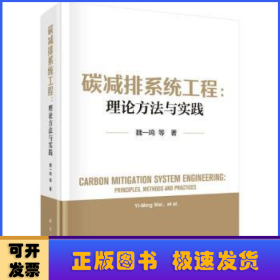
碳减排系统工程:理论方法与实践:principles,methods and practices
正版保障 假一赔十 可开发票
¥ 172.57 6.0折 ¥ 288 全新
库存42件
上海黄浦
认证卖家担保交易快速发货售后保障
作者魏一鸣等著
出版社科学出版社
ISBN9787030762900
出版时间2023-08
装帧精装
开本其他
定价288元
货号14376689
上书时间2024-05-06
- 最新上架
商品详情
- 品相描述:全新
- 商品描述
-
目录
目录
上篇 碳减排系统工程“时-空-效-益”统筹理论体系
第1章 绪论 3
1.1 全球及主要地区气候减缓行动 3
1.2 碳达峰与碳中和 5
1.3 碳减排工程及其技术体系 7
1.4 碳减排工程相关研究进展 11
1.5 本章小结 31
第2章 碳减排系统工程及其“时-空-效-益”统筹原理 32
2.1 碳减排系统工程定义 32
2.2 碳减排系统工程特征 34
2.3 碳减排系统工程体系 35
2.4 碳减排系统工程难题 37
2.5 碳减排系统工程“时-空-效-益”统筹内涵 42
2.6 碳减排系统工程“时-空-效-益”统筹理论与技术及实践 45
2.7 本章小结 49
第3章 时间统筹:短期与长期协同 50
3.1 短期减排与长期减排 50
3.2 跨期均衡路径选择 53
3.3 贴现率参数选择 58
3.4 时间统筹方法:跨期分配模型 64
3.5 本章小结 65
第4章 空间统筹:局部与整体协同 66
4.1 局部减排与整体减排 66
4.2 社会福利权重的选择 69
4.3 碳减排责任分担规则 70
4.4 空间统筹方法:减排责任的代内权衡 73
4.5 本章小结 75
第5章 效率统筹:政府管制与市场机制协同 76
5.1 政府管制与市场机制 76
5.2 效率统筹理论 86
5.3 效率统筹方法:减排资源的很优配置 92
5.4 本章小结 99
第6章 收益统筹:发展与减排协同 100
6.1 发展与减排 100
6.2 收益统筹理论 104
6.3 收益统筹方法:发展与减排的协同权衡 117
6.4 本章小结 122
中篇 碳减排路径设计与系统优化技术
第7章 碳减排路径设计技术 125
7.1 碳减排路径设计的现实需求 125
7.2 系统优化技术是碳减排路径设计的主流工具 127
7.3 综合评估模型的发展历程与现状 128
7.4 基于“时-空-效-益”统筹的系统优化方法 133
7.5 本章小结 136
第8章 综合评估平台(C3IAM)总体设计 137
8.1 综合评估技术体系 137
8.2 气候系统和社会经济系统耦合技术 139
8.3 多源数据耦合技术 146
8.4 综合评估情景设置 150
8.5 本章小结 152
第9章 行业与区域碳减排技术系统 154
9.1 国家能源技术模型 154
9.2 电力行业 156
9.3 钢铁行业 161
9.4 水泥行业 165
9.5 化工行业 170
9.6 有色行业(铝冶炼行业) 174
9.7 建筑行业 178
9.8 交通行业 180
9.9 区域协同碳达峰碳中和路径优化方法 183
9.10 本章小结 187
第10章 经济系统 188
10.1 全球多区域很优经济增长模型体系 188
10.2 能源与环境政策分析模型 202
10.3 本章小结 212
第11章 气候系统 214
11.1 基本原理 214
11.2 碳循环过程 215
11.3 气候系统模型的简化框架 218
11.4 宏观经济影响评估模块 223
11.5 农业影响评估模块 224
11.6 人体健康影响评估模块 225
11.7 特别事件影响评估模块 226
11.8 本章小结 227
第12章 土地利用系统 228
12.1 基本原理 228
12.2 食物需求模型 229
12.3 土地生产活动生物物理参数 230
12.4 土地利用分配机制 230
12.5 本章小结 236
第13章 全球减排路径设计与评估 237
13.1 《京都议定书》实施效果评估 237
13.2 《巴黎协定》实施效果评估 242
13.3 全球气候变化“自我防护策略”设计 247
13.4 后巴黎时代缔约方的经济有效行动策略 253
13.5 本章小结 257
下篇 碳捕集、利用与封存工程的管理实践
第14章 碳减排路径与CCUS工程 261
14.1 全球碳减排路径与CCUS工程 261
14.2 中国CCUS发展需求 266
14.3 CCUS工程实践挑战与需求 268
14.4 本章小结 270
第15章 CCUS项目部署与可行性论证 271
15.1 CCUS项目优先级评价 271
15.2 中国CCUS典型项目投资可行性论证 280
15.3 本章小结 301
第16章 CCUS项目投资决策与运营优化 303
16.1 CCUS项目投资决策的主要影响因素 303
16.2 考虑CCUS的发电技术组合投资决策 307
16.3 燃煤耦合生物质发电的很好碳捕集改造时机 318
16.4 燃煤耦合生物质发电的碳捕集运营优化 327
16.5 本章小结 337
第17章 CCUS项目风险管理 339
17.1 CCUS项目风险管理概述 339
17.2 CCUS项目风险识别 344
17.3 CCUS项目风险评价典型方法 352
17.4 CCUS项目风险应对 356
17.5 本章小结 359
第18章 CCUS工程源汇评估 361
18.1 CCUS碳排放源识别 361
18.2 CCUS封存场地封存潜力及适宜性评价 363
18.3 本章小结 375
第19章 CCUS工程源汇匹配与空间规划 376
19.1 全球CCUS工程源汇匹配优化技术 376
19.2 全球CCUS工程源汇匹配布局方案 382
19.3 本章小结 387
第20章 CCUS工程二氧化碳管网优化设计 388
20.1 二氧化碳管道输送技术及工程实践现状 388
20.2 面向碳中和目标的陆海CO2运输管网规划方案 390
20.3 本章小结 400
第21章 中国碳达峰碳中和实现路径 401
21.1 中国碳达峰碳中和的四对核心关系的辩证原理 401
21.2 中国碳达峰碳中和路径优化方法 407
21.3 中国碳达峰碳中和时间表与路线图 418
21.4 本章小结 438
参考文献 439
附录 478
后记 485
CONTENTS
Part Ⅰ Theory Framework of Carbon Mitigation System Engineering:
‘Time-Space-Efficiency-Benefit’(TSEB) Overall Planning
Chapter 1 Introduction 3
1.1 Global and Major Regional Climate Mitigation Actions 3
1.2 Carbon Peak and Carbon Neutrality 5
1.3 Carbon Mitigation Engineering and Its Technical System 7
1.4 Research Progress in Carbon Mitigation Engineering 11
1.5 Chapter Summary 31
Chapter 2 Carbon Mitigation System Engineering and Its‘Time-Space-
Efficiency-Benefit’Overall Planning Principles 32
2.1 Definition of Carbon Mitigation System Engineering 32
2.2 Characteristics of Carbon Mitigation System Engineering 34
2.3 Framework of Carbon Mitigation System Engineering 35
2.4 Challenges in Carbon Mitigation System Engineerin 37
2.5 The Connotation of Carbon Mitigation System Engineering‘Time-Space-
Efficiency-Benefit’Overall Plannin 42
2.6 Theory, Technology, and Practice of Carbon Mitigation System
Engineering‘Time-Space-Efficiency-Benefit’Overall Planning 45
2.7 Chapter Summary 49
Chapter 3 Time Coordination: Short-Term and Long-Term synergy 50
3.1 Short-Term Carbon Reduction and Long-Term Carbon Reduction 50
3.2 Inter-Temporal Equilibrium Path Selection 53
3.3 Discount Rate Parameter Selection 58
3.4 Time Coordination Method: Inter-Temporal Allocation Model 64
3.5 Chapter Summary 65
Chapter 4 Spatial Coordination: Local and Overall Synergy 66
4.1 Local Carbon Reduction and Overall Carbon Reduction 66
4.2 Selection of Social Welfare Weights 69
4.3 Principles of Carbon Reduction Responsibility Allocation 70
4.4 Spatial Coordination Method: Intragenerational Balance of Carbon
Reduction Responsibilities 73
4.5 Chapter Summary 75
Chapter 5 Efficiency Coordination: Government Regulation and Market
Mechanism Synergy 76
5.1 Government Regulation and Market Mechanism 76
5.2 Efficiency Coordination Theory 86
5.3 Efficiency Coordination Method: Optimal Allocation of Carbon Reduction
Resources 92
5.4 Chapter Summary 99
Chapter 6 Benefit Coordination: Development and Carbon Reduction
Synergy 100
6.1 Development and Carbon Reduction 100
6.2 Benefit Coordination Theory 104
6.3 Benefit Coordination Method: Synergies and Trade-offs Between
Development and Carbon Reduction 117
6.4 Chapter Summary 122
Part II Carbon Reduction Pathways Design and System Optimization
Technology Via TSEB
Chapter 7 Carbon Reduction Pathways Design Technology 125
7.1 Practical Needs of Carbon Reduction Pathways Design 125
7.2 System Optimization Technology is the Mainstream Tool for Carbon
Reduction Pathways Design 127
7.3 Development and Current Status of Integrated Assessment Technology 128
7.4 System Optimization Method Based on‘Time-Space-Efficiency-Benefit’
Overall Planning 133
7.5 Chapter Summary 136
Chapter 8 Integrated Assessment Platform (C3IAM) and Overall Design of
Coupling Technology 137
8.1 Integrated Assessment Technology System 137
8.2 Coupling Technology of Climate System and Socio-Economic System 139
8.3 Multi-Source Data Coupling 146
8.4 Scenario Setting 150
8.5 Chapter Summary 152
Chapter 9 Carbon Reduction Technology System in Industries 154
9.1 National Energy Technology Model 154
9.2 Power Industry 156
9.3 Steel Industry 161
9.4 Cement Industry 165
9.5 Chemical Industry 170
9.6 Non-Ferrous Industry (aluminum smelting industry) 174
9.7 Construction Industry 178
9.8 Transportation Industry 180
9.9 Optimization Method for Regional Collaborative Carbon Peak and Carbon
Neutrality Roadmap 183
9.10 Chapter Summary 187
Chapter 10 Economic System 188
10.1 Global Optimal Economic Growth Model 188
10.2 Energy and Environment Policy Analysis Model 202
10.3 Chapter Summary 212
Chapter 11 Climate System 214
11.1 Basic Principle 214
11.2 Carbon Cycle Process 215
11.3 Simplified Framework for Climate System Model 218
11.4 Macroeconomic Impact Assessment Module 223
11.5 Agricultural Impact Assessment Module 224
11.6 Human Health Impact Assessment Module 225
11.7 Extreme Event Impact Assessment Module 226
11.8 Chapter Summary 227
Chapter 12 Land Use System 228
12.1 Basic Principle 228
12.2 Food Demand Model 229
12.3 Biophysical Parameters of Land Production 230
12.4 Land Use and Distribution Mechanism 230
12.5 Chapter Summary 236
Chapter 13 Design and Assessment of Global Emission Reduction Pathway
237
13.1 Assessment of the Implementation Effects of the Kyoto Protocol 237
13.2 Assessment of the Implementation Effects of the Paris Agreement 242
13.3 Design of‘Self-Protection Strategies’for Global Climate Change 247
13.4 Strategies for Cost-Effective Action by Parties in the Post-Paris Era 253
13.5 Chapter Summary 257
Part III Practices for Carbon Capture Utilization and Storage (CCUS)
Projects Via TSEB
Chapter 14 Carbon Reduction Pathways and CCUS Projects 261
14.1 Global Carbon Reduction Pathways and CCUS Projects 261
14.2 Development Pathways for CCUS in China 266
14.3 Challenges and Requirements in CCUS Project Implementatio 268
14.4 Chapter Summary 270
Chapter 15 Feasibility Analysis of CCUS Project Deployment 271
15.1 Evaluation of CCUS Project Priorities 271
15.2 Feasibility Analysis of Typical CCUS Projects in China 280
15.3 Chapter Summary 301
Chapter 16 Investment Decision and Operational Optimization of CCUS
Projects 303
16.1 Key Factors Influencing Investment Decision for CCUS Projects 303
16.2 Investment Decision for a Portfolio of Power Generation Technologies
with CCU 307
16.3 Optimal Retrofit Timing for Biomass Co-firing in Coal-fired Power
Plants 318
16.4 Operational Optimization for Biomass Co-fi
— 没有更多了 —

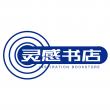
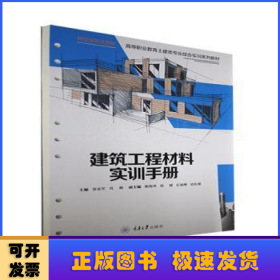


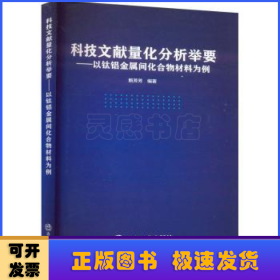


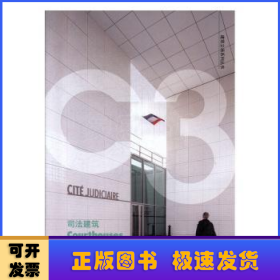
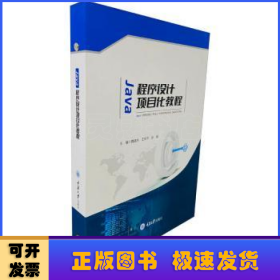
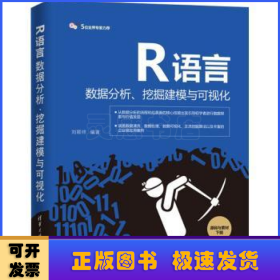

以下为对购买帮助不大的评价